Who's next to blow up?
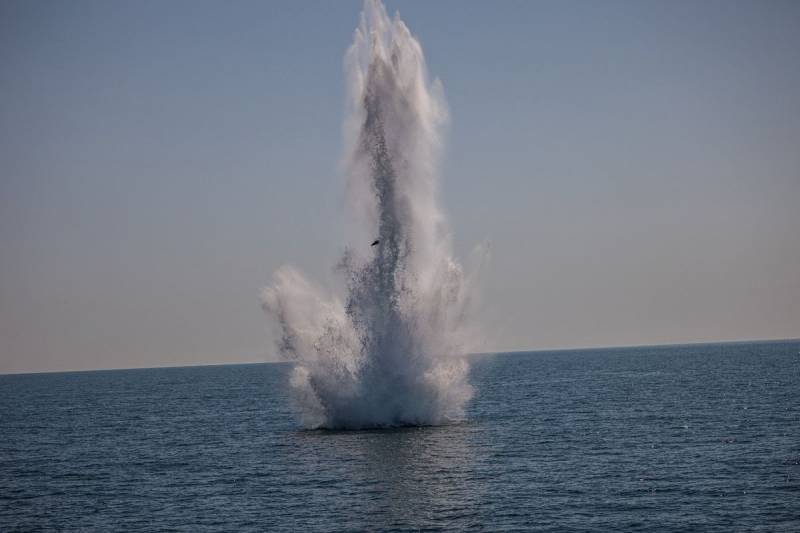
Now is the winter season of storms in the Black Sea. Previously, storms used to bring various garbage to the shores, today ... You know, a contraption weighing a ton, which carries 250-300 kg of explosive - this is not funny, it is very dangerous.
Imagine yourself in the place of the residents of Batumi, who were brought to the beach by such a miracle. Mina floundered in the surf and, just in case, decided to explode. No one was hurt, but I'm sure the nerves of many were shaken quite well.
Of course, claims about the mines of the country, which were affected by the NMD in this plan, put forward claims from both Russia and Ukraine. Russia, of course, for the company, since the Black Sea Fleet did not carry out mine laying in the interests of the NMD. It would be generally strange to blame a country that initially conducted offensive operations in mine setting, which serve directly opposite purposes.
But the fact that the Ukrainians, in the heat of the first days, threw mines indiscriminately, hoping to block the approaches to Odessa and Mariupol - but who is to judge them? It was the same, and the fact of mining the waters was confirmed by the Ukrainian side more than once.
Given the state of the naval fleet Ukraine, which was very far from the ground forces, it is not surprising that the mines that flew into the Black Sea waters very easily came off the old minreps and floated away in all directions.
Mina is a very capricious phenomenon. Possessing a certain reserve of buoyancy, they are capable of drifting very long distances. And there to arrange a serious commotion, taking into account the above-mentioned property of mines to blow up their hundreds of kilograms of explosives. And today, mines pose a threat to both military and completely peaceful ships.
Mina - she does not see the flags, and therefore will tear the skin of the ship, as they say, without looking at the passport. At least four mine incidents took place outside the war zone, fortunately without any casualties or consequences.
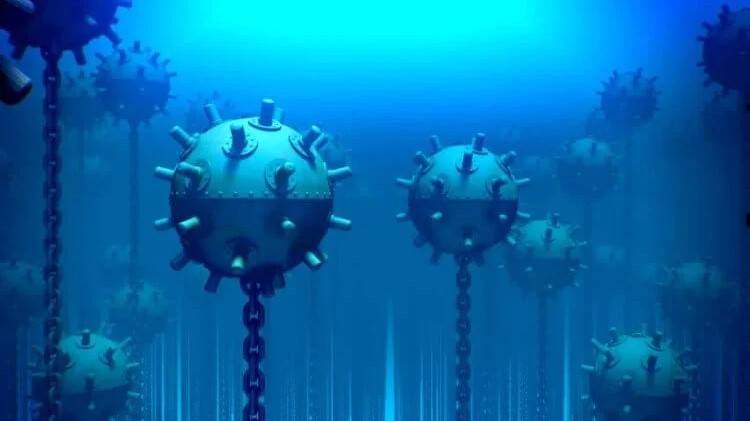
Therefore, it can already be recognized that the mines that Ukraine rather haphazardly poured into the Black Sea are beginning to pose a threat to the safety of navigation and not only navigation.
There is a completely reasonable option that as the conflict drags on, more and more unexploded mines will break off the minreps and drift somewhere at the behest of the waves until an object of application of the kinetic energy of the explosion is found.
A combination of seasonal storms and corrosion from exposure to salt water has been eating away at the mechanisms and cables of old mines for almost a year, freeing them and sending mines around the Black Sea.
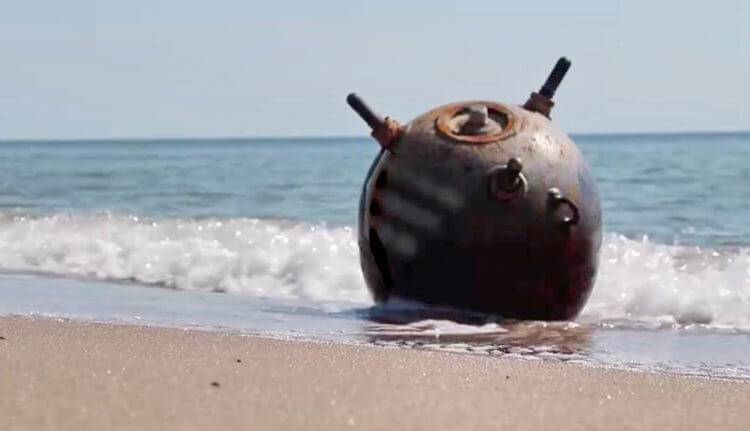
Mir mine near Odessa
At the very end of February 2022, a few days after the start of the NWO, Turkish Navy mine hunters discovered a mine in the overcrowded Bosphorus and detonated it before it could pose a danger to shipping. By April, three more mines had been discovered in Turkish waters.
In September 2022, a Romanian Navy dredging ship struck an unknown mine while it was attempting to clear it about 25 nautical miles northeast of the port of Constanta. The mine did explode, but none of the 75 crew members were injured. The report claims that by September 2022, 28 mines were destroyed in the western half of the Black Sea by the Romanian Navy alone.
In January 2023, the Bulgarian Navy carried out a controlled detonation of a MYAM (small anchor mine) naval mine.
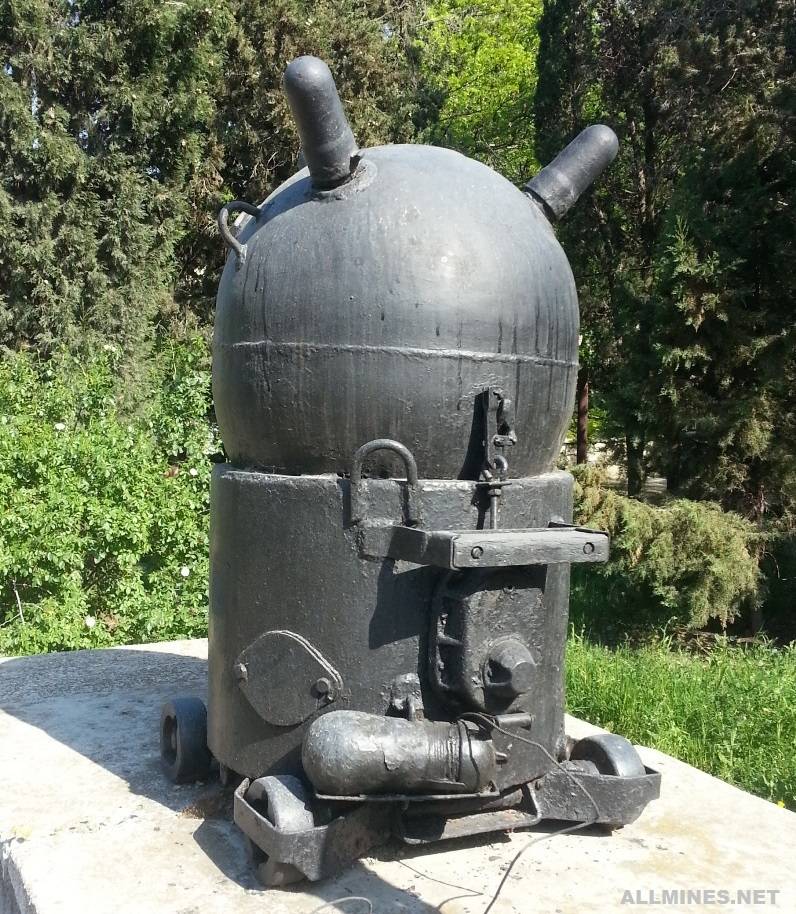
MNM - a small anchor mine, weighing 175 kg, carrying a charge of 20 kg of an explosive such as ammotol or trinitrotoluene. It was adopted by the Soviet Navy in 1943.
Probably, it is not worth talking for a long time that in the Russian fleet, mines of the YM, MYAM and YARM types have long been removed from service, but in Ukraine they are still preserved. It is clear that the saved mines were used for their intended purpose by Ukrainian sailors in a state, as they say, close to passion.
This is generally normal. That February, frantic attempts to defend Odessa from a possible Russian amphibious assault resulted in the dumping of anything that could cause damage into the sea.
On Valentine's Day, a free-floating naval mine suddenly appeared in Agva, a coastal town east of Istanbul along Turkey's northern coast. The mine was hit by the surf on the pier and, quite naturally, it exploded. And on the dam was a restaurant, which received little damage.
On February 13, an incident happened on the beach in Batumi. A naval mine was seen floundering in the surf, and a short time later it suddenly exploded.
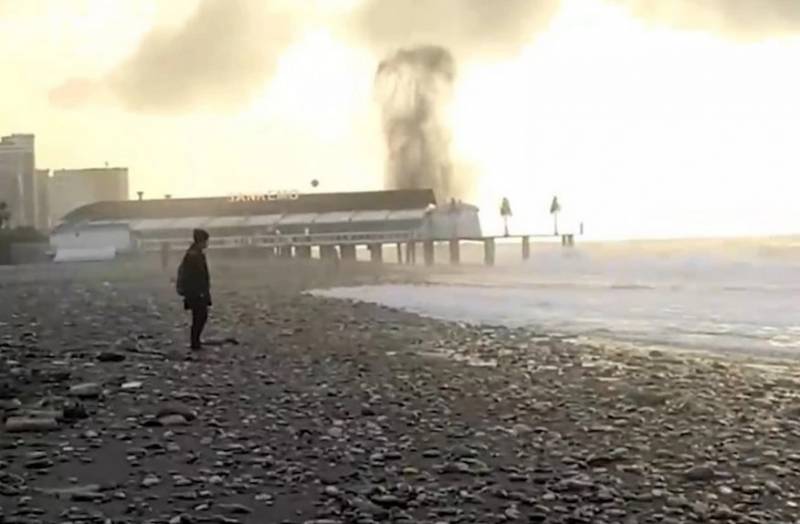
Local services reported that no one was injured on the shore. Even though it's February. It is very difficult to say what the result could be if this happened in July. But it is clear that there would be a lot of victims.
In general, the situation is very difficult.
Only the Ukrainian maritime department can at least approximately provide figures for the number of old mines thrown into the sea and the places where the mines were laid. But today, the Ukrainian military seems to have no time to clean up after themselves. And it would be worth it. The mines that have been laid and are being detonated can first of all bring losses to countries that are very loyal to Ukraine: Turkey, Georgia, Romania and Bulgaria.
And the citizens who died on the beach or the ship blown up by a mine (I sincerely hope, with another cargo for the Armed Forces of Ukraine) will not bring warming in relations, but rather, on the contrary.
Of course, Russia can be blamed for this. It's a common move, but not in this case. When a country conducts military operations and plans amphibious operations on the coast of another country, it will in no case set up minefields near ports and near the coast, as this will make it difficult to land an amphibious assault.
At the same time, it is quite normal for the defending side to make it as difficult as possible to approach its maritime infrastructure and coasts with the help of mines. And to attribute to Russia the installation of mines in the Black Sea looks somewhat unreasonable.
And Ukrainian mines will be a problem for a long time to come. No one knows how many of these mines are now roaming freely in the Black Sea, and the longer they remain uncollected, the further they will drift. Mines exposed to sea water and the elements are likely to corrode and become more dangerous and unpredictable over time. It's only a matter of time before any ship or vacationers become their victims.
Who will deal with Ukrainian mines is a question. Ukraine definitely won't. They, firstly, do not need it at all, and secondly, there is nothing. All mine and anti-mine forces of the Ukrainian Navy consist of the ancient degaussing vessel SR-568, which went to the Ukrainian Navy, was named "Balta" and was converted into a mine layer.
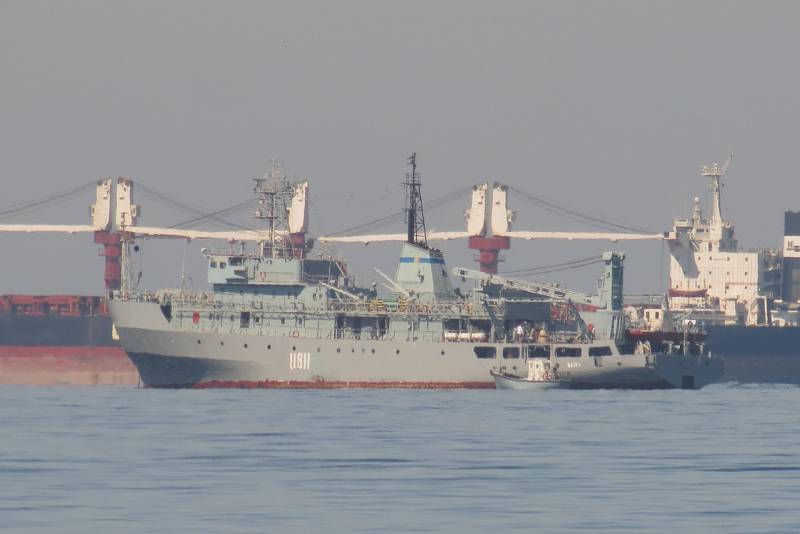
But there are no minesweepers in the Ukrainian Navy, alas.
So anyone will have to disentangle the soup, in which mines play the role of dumplings, but not Ukraine. But the problem of wandering mines will still have to be solved by the forces of the countries of the Black Sea region, since the further, the more serious the threat from old, but still deadly sea mines will become.
Information